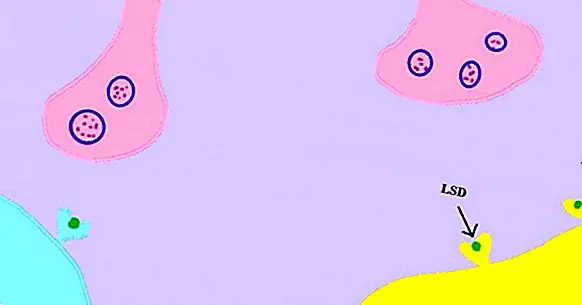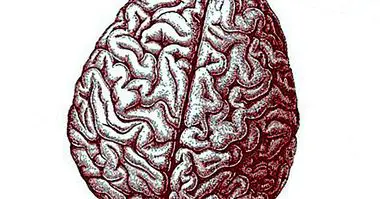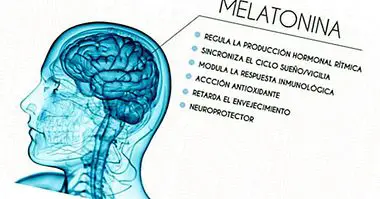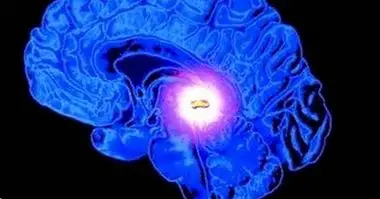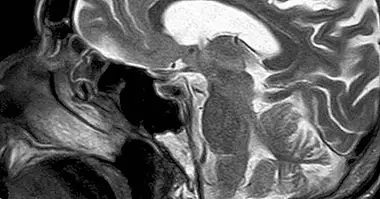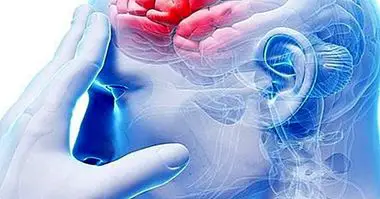Metabotropic receptors: their characteristics and functions
Today, a large part of the population knows that brain information is transmitted from bioelectric impulses that travel through bundles of neurons or nerves to their destination, allowing this fact both the perception and the performance of the internal and external environment .
This transmission depends on the different neurons being able to establish a connection and transmit either voltage or neurotransmitters, specifying for it some kind of mechanism that allows to detect and integrate these elements in the post-synaptic neuron to generate a reaction or not. form of action potential (or other types of potential). These elements are called receivers. There are mainly two major types of receivers, and metabotropic receptors are some of the most important and known .
- Related article: "Types of neurotransmitters: functions and classification"
Basic definition: what is a receiver?
The term receptor is often used in a large number of contexts and areas, with physics, electronics or the judicial field being some of them. Another of these contexts is neuroscience, this being the one we focus on in this article.
At the neuron level, we call receptors the set of proteins that are part of the neuronal membrane (or glial, since it has been shown that they also have some receptors) and that they act as a means of communication with the outside of the cell.
These are elements that act as a bridge or lock between the inside and the outside of the neuron, and that is activated only when certain substances arrive (if they are controlled by neurotransmitters) or before certain electric charges in such a way that they open channels through which ions pass that will allow generating potentials of different types. They are especially important in the generation of excitatory and inhibitory potentials, which facilitate or inhibit the possibility of an action potential appearing, and which ultimately allow neuronal communication and the transmission of information.
There are different types of neurochemical receptors, the two main types being ionotropic and metabotropic receptors. It is in the latter that we are going to focus on this article.
The metabotropic receptors
Metabotropic receptors are among the main and most relevant types of neurochemical receptor, activating from reception with a specific ligand or neurotransmitter . These are receivers that present a relatively slow performance, since their activation does not generate an immediate opening of the channel but triggers a series of processes that end up leading to it.
First of all it will be necessary that the neurotransmitter in question binds to the receptor, something that will generate the activation known as G protein, element that can either open the channel so that they can enter and / or exit certain ions or activate other elements , who will be known as second messengers. Thus, the performance of these receptors is rather indirect.
Although metabotropic receptors are relatively slower than other types of receptor, the truth is that their performance is also more durable over time. Another advantage of these receivers is that they allow the opening of different channels at the same time, since the second messengers can act in cascade (generating the activation of different proteins and substances) in such a way that the action of the metabotropic receptors can be more multitudinous and allow more easily the generation of some type of potential.
And not only do they open channels: second messengers can have different actions within the neuron, and can even interact with the nucleus without having to open a channel for it.
- Maybe you're interested: "Types of neurons: characteristics and functions"
Some neurotransmitters with metabotropic receptors
The metabotropic receptors they are very common in our nervous system , interacting with different types of neurotransmitters. Below we will mention some more specific examples of the neurotransmitters that serve as a ligand to some of the metabotropic receptors present in our body.
1. Acetylcholine and muscarinic receptors
Acetylcholine is one of the substances that has a specific type of metabotropic receptors, the so-called muscarinic receptors. This type of receptor can be both excitatory and inhibitory, generating different effects depending on its location and function.
It is the predominant type of cholinergic receptor in the central nervous system , as well as in the parasympathetic branch of the autonomic nervous system (linked to the heart, intestines and salivary glands).
However, it must be taken into account that acetylcholine also has other types of receptors, nicotinic, which are not metabotropic but ionotropic.
- Related article: "Parts of the Nervous System: functions and anatomical structures"
2. Dopamine
Dopamine is another substance with metabotropic receptors. In fact, in this case we find that all dopaminergic receptors are metabotropic , there are different types depending on whether their action is excitatory or inhibitory and whether they act at the pre or postsynaptic level.
3. Noradrenaline and adrenaline
As with dopamine, from which it is derived, noradrenaline also possesses all its metabotropic type channels. Adrenaline, derived from noradrenaline, too. They are found both inside and outside the nervous system (for example in adipose tissue) and there are different types depending on whether they are excitatory or inhibitory or whether they act pre or post-synaptic .
4. Serotonin
Also serotonin has metabotropic receptors, this being the majority type. However, the 5-HT3 receptor is ionotropic. They are mostly inhibitory.
5. Glutamate and the metabotropic receptor
The glutamate is one of the main excitatory substances of the brain , but most of its receptors (and the best known, such as NMDA and AMPA) are ionotropic. Only one type of glutamatergic receptor has been identified that is not, simply receiving the name metabotropic glutamate receptor.
6. Gamma-aminobutyric acid or GABA
Unlike glutamate, GABA is the main brain inhibitor. Two types of basic receptor have been identified from it, being GABAb metabotropic type.
Bibliographic references:
- Gómez, M .; Espejo-Saavedra, J.M. and Taravillo, B. (2012). Psychobiology CEDE Preparation Manual PIR, 12. CEDE: Madrid.
- Kandel, E.R .; Schwartz, J.H .; Jessell, T.M. (2001). Principles of Neuroscience. Madrid: McGrawHill.

